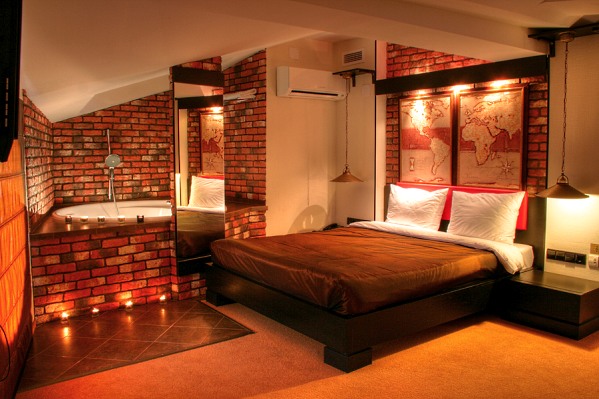Re-Planning of FlatsThe current housing legislation sets the strict rules and conditions for the implementation of the procedure of re-planning of living accommodations, as well as non-residential objects. The direct term of re-planning includes the implementation of certain actions, focused on changing the size, configuration, functional features of the room with an obligatory fixing of such innovations in the technical passport of immovable property. Of course, deciding to carry out the re-planning, people or organizations are pursuing the most good targets − improving a living comfort, convenience and efficiency of labor, a reasonable space allocation. Features of planning standard rooms really are not always perfectly suitable to all the requirements of owners, but uncontrolled changes of structural characteristics of any flat rife with not always favorable consequences. Unfortunately, many owners of immovable property are choosing the least resistance path and carried out re-planning in unauthorized manner, without informing the appropriate authorities and following the reconciliation procedure. It should be noted that such unscrupulous citizens may be faced with a whole set of problems. For example, they can exploit the modified object successfully, but dispose of it at their own discretion can not − the law prohibits to sell, to present, to exchange or to make a property over to their heirs. First of all, having decided to carry out the re-planning in order to implement your dreams of a comfortable and cozy house, it is necessary to find out what kinds of reconstruction forbidden by the housing legislation.
Thus, It is Not Permitted by Law: - Increasing in the size of the bathroom, toilet or kitchen by way of the living room reduction; - Dismantling of the load-bearing walls; - The central heating sources movement on a balcony or loggia; - Placing of a toilet and a bathroom above the living room; - Increasing the apartment’s size due to a general-purpose premise; - Realization of conversions, which could affect exploitation of the house and obstruct to get access to the communications and electrical equipment; - Blocking out the access to the pipes (water-supply, sewerage and heating); - The kitchen design that does not have a source of natural light; - Increasing the non-residential premises’ size due to reducing a dwelling; - Installation of the front door, closing an opened door of the adjacent apartment; - Disposition of entry in the toilet from a kitchen space.
Besides, it should be noted that every room area formed as a result of the reorganization should not be a value less than 97 square feet, and width − less than 79 square feet with window. In Terms of Legislation, They are Permissible and Can Be Attributable to the Ways of Re-Planning with the Next Activities: - Installation of extra partitions and walls, increasing the floor loading; - The creation of openings (in the capital floor loading and walls); - The construction of stairs; - Structural changes in gender; - The construction of bathrooms and toilets, kitchens; - Changes in the location of central heating sources; - Changes in the place of plumbing equipment; - The closure of the loggias and balconies by glass; - Reconfiguration of openings (windows and exterior doors); - Installation of various equipment (air conditioners, antennas, satellite dishes), as well as the replacement of boards (both gas and electric); - The combination of indoor premises with balconies or loggias; - Installation of the equipment, affecting the overall load home networks.
Determined the nature, the technical features and the volume of proposed re-planning, the owner of dwelling must get consent for conversion with local authorities.
The Owner of Dwelling Must Grant:
Besides, in the event of discovery of a re-planning room in the primary building, which refers to the historical, cultural or architectural monuments, this case should be coordinated with the public authority protecting such important objects.
Also, in the event of performing re-planning in a flat which is occupied on the term of the contract of social rent, it will be needed the consent of all members of the family of a person, defined as the tenant of the flat. In the documents listed above, in practice, there are usually some difficulties in establishing and coordination of the project, which contains all the data about re-planning, since this document is the basis for all the planned activities. In order to get such a paper, the owner must turn to the project organization authorized for this kind of work. After reviewing the necessary documents, visiting, if necessary, the property unit, the project company specialists prepare and give the project. Depending on the complexity and technical characteristics of proposed works, the designers include an explanatory note with general data, descriptions of events, plans and explications, etc., in it. Various design organizations offer different timing of such works, but mostly time expenditure of the project costs 5 − 10 working days. The cost of such service varies too and also depends on the amount of the planned changes in the flat. Thus, the collected documents executed properly and the owner of the flat sends them to the local authorities. Keep in mind that the list of documents for re-planning for authority engineering approval is exhaustive, and officials should not require from you anything more. Handed receipt confirming surrender of the entire set of documents, experts of the local government authority will grant you the authorization on matching of your re-planning intentions, or the refusal to issue such a decision. The Reasons for Refusal May Be Several: the lack of any document from the list of essential ones or non-conformity of any facts to requirements of the legislation in the project documentation. Remember, that if the flat’s owner disagrees with the refusal of the local government authority in the permission of re-planning, this decision may be appealed in court. The obtained permission, revising the owner's wish to carry out re-planning activities, may at least become the basis for commencement of works in the flat’s reconstruction. After completing all planned activities, the owner of the re-planned room needs to tell the same local authority about fulfilling re-planning. Experts will check compliance of the performed works up to the project documentation and will give to the owner an acceptance certificate. All above actions are suitable for those concerned citizens who have decided to make all arrangements for re-planning in strict accordance with the housing legislation. What can the owners do else if they have already made any changes in the appearance of their property and decided to bring into compliance all documents and legalize the re-planning yet? Of course, such a solution would be rather reasonable and avoid possible trouble with building inspection authorities. In order to legitimize the already implemented reconstruction, the property owner must apply to court, having made a statement of claim for confirmation of the existing re-planning can not pose a threat to life and health in any way, and does not violate anyone's rights or legitimate interests. A claim is made by the owner under his personal name and sent to the court with the following documents:
If re-planning was carried out in compliance with all existing regulations, a court will give an authorization to its re-planning form. After the court decision becomes legal, you can apply to the relevant authorities in order to issue a new technical certificate for residential premises. Having this document, the owner of the flat can be calm − his estate corresponds to the property law, and using of it is not limited by the state in any way. More articles on the topic: - Ideas for Home Offices with Photos - Ideas for Water Pools – Inexpensive and Beautiful - Expensive Ones, Rich Mansions and Homes. 50 Photo - Dream House. Photos. Projects - The choice of colors and tones in the repair of apartments - Decoration Plasters Characteristics - The Unique Interior of the Apartment − a Subject of Pride for Its Inhabitants | |
|
| |
Shelves in Bedroom
Violet Color in Interior − with Examples
Bedroom Wonderful Design − Ideas with Photos
Removing Silicone
Ceiling in Nursery − Unique Collection of Photo Design
Cozy Bedroom − Tips and Mistakes
Beautiful and Practical Splash Back for Your Kitchen
Nostalgic vintage interiors
How to Arrange Bedroom for Relax Body and Soul
Drapes in Nursery. Ideas with Photos











